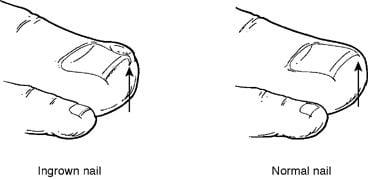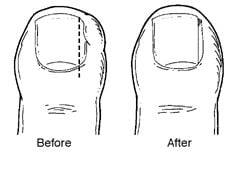SEBASTIAN LOCATION (New Location!)
13852 US Hwy 1
Sebastian, FL 32958
VERO BEACH LOCATION
- AminoFix injection for Plantar Fasciitis & Achilles Tendonitis
- Arch Pain
- Bunions And Bursitis
- Certified Wound Care Specialist
- Comprehensive Foot And Ankle Surgery
- Congenital Foot And Ankle Deformities
- Corns And Calluses
- Diabetic Foot Care
- Flat Feet
- Foot And Ankle Fractures
- Fungal Skin Infections
- Hammertoes
- Laser treatment for fungal nails
- Heel Spurs
- Metatarsal Disorders
- Pediatric Foot And Ankle Problems & Injuries
- Plantar Fasciitis
- Plantar Warts
- Reconstructive Surgery Of The Foot And Ankle
- Sports Related Injuries
- Traumatic Surgery Of The Foot And Ankle
- Treatment Of Charcot Foot And Ankle Deformities
- Treatment Of Ingrown, Fungal And Thickened Nail Conditions
Welcome to the Patient Information Center! Here you will find information about the most common foot and ankle ailments. Click on any of the issues below to find out more about specific problems and what treatment options are available. Here you will also find links to interesting websites pertaining to podiatry. If you have any questions, feel free to Contact Us through the website or give us a call!
Common Ailments
- Achilles Tendon Disorders
- Acute Inflammation
- Ankle Fracture
- Ankle Sprain
- Bunions
- Cavus Foot
- Charcot Foot
- Chronic Ankle Instability
- Crossover Toe
- Diabetic Complications and Amputation Prevention
- Diabetic Foot Care Guidelines
- Diabetic Peripheral Neuropathy
- Equinus
- Flexible Flatfoot
- Fractures of the Fifth Metatarsal
- Ganglion Cyst
- Gout
- Haglund’s Deformity (pump bump)
- Hallux Rigidus
- Hammertoes
- Heel Pain
- Ingrown Toenail
- Lisfranc Injuries
- Malignant Melanoma of the Foot
- Morton’s Neuroma
- Osteoarthritis of the Foot and Ankle
- Pediatric Flatfoot
- Pediatric Heel Pain
- Peroneal Tendon Injuries
- Plantar Fasciitis (Heel Pain)
- Plantar Wart (Verruca Plantaris)
- Posterior Tibial
- Puncture Wounds
- Rheumatoid Arthritis in the Foot and Ankle
- Sesamoid Injuries in the Foot
- Tailor’s Bunion
- Tarsal Coalition
- Tarsal Tunnel Syndrome
- Toe and Metatarsal Fractures
Helpful Information & Links
The path to board certification by the American Board of Podiatric Surgery (ABPS) begins after graduating from an approved podiatric surgical residency program after which our doctors pass a rigorous written examination to become board qualified. Next, doctors spent up to 6 years of their initial practice time collecting various patient cases which demonstrate to the ABPS their decision-making, competency, and skills as a foot and ankle surgeon. After submission of these cases, detailed review, and acceptance to the ABPS, doctors sit for the ABPS oral examination held in Chicago, IL.
- Dr. Paradoa has satisfied requirements by the ABPS to become board certified in Foot, Reconstructive Rearfoot/Ankle Surgery.
Our patients can feel confident that they are being treated by a foot
and ankle surgeon who has dedicated years of her education, training,
and experience to achieving board certification status by the American
Board of Podiatric Surgery.
The American Board of Podiatric Surgery website
has a wealth of information about podiatry and the requirements that
must be met.
A Doctor of Podiatric Medicine (DPM) is to the foot and ankle what a dentist is to the mouth, or an ophthalmologist to the eye — a doctor specializing in the prevention, diagnosis and treatment of foot disorders resulting from injury or disease. A DPM makes independent judgments, prescribes medications and performs surgery. The human foot has a complex interrelation with the rest of the body which means that it may be the first area to show signs of serious conditions such as diabetes and cardiovascular disease. Since the podiatric physician is often the first to detect symptoms of these disorders, he or she becomes a vital and sometimes lifesaving link in the health care team.
The American College of Foot & Ankle Surgeons is a professional society of thousands of foot and ankle surgeons. Their website contains a plethora of information about advances in podiatry and connects its members to share that knowledge.
FootHealthFacts.org is the official consumer website of the American College of Foot and Ankle Surgeons. This is a wonderful resource of information! From what foot injuries Olympians have suffered from during the 2012 London Olympics to a growing trend in lawn mower accidents, you will find interesting, informative and compelling articles in the world of Podiatry.
Patient Forms
Please print and fill out these forms so we can expedite your first visit:
In order to view or print these forms you will need Adobe Acrobat Reader
installed. Click here to download it: 
- Home >
- Articles >
- Nails and Skin >
- Ingrown Toenails
What Is an Ingrown Toenail?
When a toenail is ingrown, it is curved and grows into the skin, usually at the nail borders (the sides of the nail). This “digging in” of the nail irritates the skin, often creating pain, redness, swelling, and warmth in the toe.
If an ingrown nail causes a break in the skin, bacteria may enter and cause an infection in the area, which is often marked by drainage and a foul odor. However, even if the toe isn’t painful, red, swollen, or warm, a nail that curves downward into the skin can progress to an infection.

Causes
Causes of ingrown toenails include:
- Heredity. In many people, the tendency for ingrown toenails is inherited.
- Trauma. Sometimes an ingrown toenail is the result of trauma, such as stubbing your toe, having an object fall on your toe, or engaging in activities that involve repeated pressure on the toes, such as kicking or running.
- Improper trimming. The most common cause of ingrown toenails is cutting your nails too short. This encourages the skin next to the nail to fold over the nail.
- Improperly sized footwear. Ingrown toenails can result from wearing socks and shoes that are tight or short.
- Nail Conditions. Ingrown toenails can be caused by nail problems, such as fungal infections or losing a nail due to trauma.
 Treatment
Treatment
Sometimes initial treatment for ingrown toenails can be safely performed at home. However, home treatment is strongly discouraged if an infection is suspected, or for those who have medical conditions that put feet at high risk, such as diabetes, nerve damage in the foot, or poor circulation.
Home care:
If you don’t have an infection or any of the above medical conditions, you can soak your foot in room-temperature water (adding Epsom’s salt may be recommended by your doctor), and gently massage the side of the nail fold to help reduce the inflammation.
Avoid attempting “bathroom surgery.” Repeated cutting of the nail can cause the condition to worsen over time. If your symptoms fail to improve, it’s time to see a foot and ankle surgeon.
Physician care:
After examining the toe, the foot and ankle surgeon will select the treatment best suited for you. If an infection is present, an oral antibiotic may be prescribed.
Sometimes a minor surgical procedure, often performed in the office, will ease the pain and remove the offending nail. After applying a local anesthetic, the doctor removes part of the nail’s side border. Some nails may become ingrown again, requiring removal of the nail root.
Following the nail procedure, a light bandage will be applied. Most people experience very little pain after surgery and may resume normal activity the next day. If your surgeon has prescribed an oral antibiotic, be sure to take all the medication, even if your symptoms have improved.
Preventing Ingrown Toenails
Many cases of ingrown toenails may be prevented by:
- Proper trimming. Cut toenails in a fairly straight line, and don’t cut them too short. You should be able to get your fingernail under the sides and end of the nail.
- Well-fitted shoes and socks. Don’t wear shoes that are short or tight in the toe area. Avoid shoes that are loose, because they too cause pressure on the toes, especially when running or walking briskly.
What You Should Know About Home Treatment
|
Appointment Request
Our Locations
Find us on the map
Hours of Operation
Our Regular Schedule
Vero Beach Location
Monday:
9:00 AM-5:00 PM
Tuesday:
9:00 AM-5:00 PM
Wednesday:
9:00 AM-5:00 PM
Thursday:
9:00 AM-5:00 PM
Friday:
9:00 AM-12:00 PM
Saturday:
Closed
Sunday:
Closed
Sebastian Location
Monday:
9:00 AM-5:00 PM
Tuesday:
9:00 AM-5:00 PM
Wednesday:
9:00 AM-5:00 PM
Thursday:
9:00 AM-5:00 PM
Friday:
9:00 AM-12:00 PM
Saturday:
Closed
Sunday:
Closed
